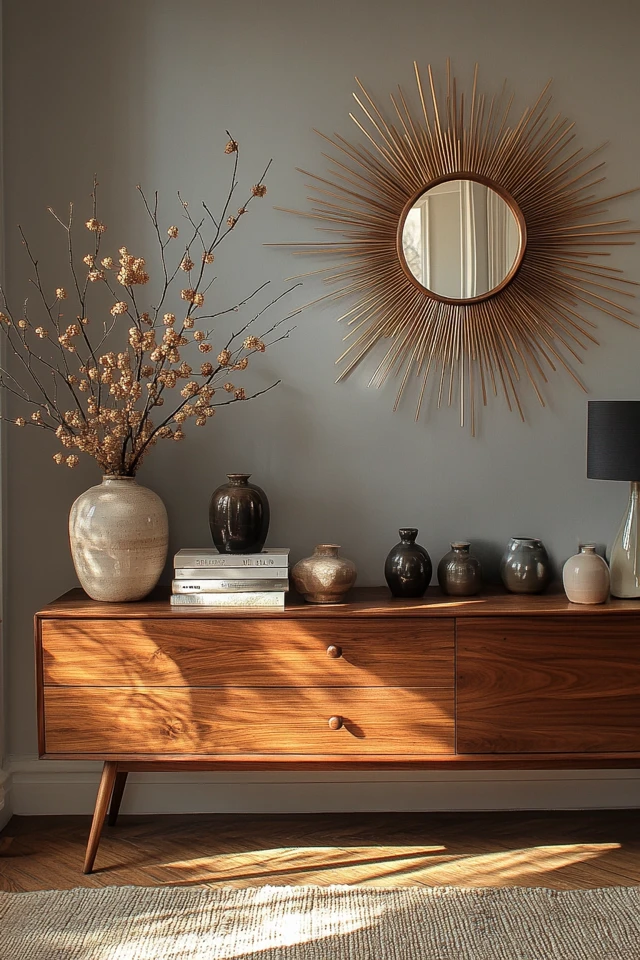A mid-century modern sideboard is more than just a piece of furniture—it’s a design statement that brings elegance, functionality, and timeless style to any room. With their clean lines, rich wood tones, and practical storage, sideboards are a versatile addition to living rooms, dining spaces, or entryways.
When I brought my first mid-century modern sideboard into my home, it changed everything. It was a vintage walnut piece with sliding doors and tapered legs, and it instantly elevated my dining room. Not only did it serve as a stylish focal point, but it also provided much-needed storage for dinnerware and linens. Over the years, I’ve discovered just how versatile and essential sideboards can be in mid-century design.
In this guide, we’ll explore the best mid-century modern sideboards, offering tips on how to choose the right one and style it for a sophisticated look in your home.
What Makes a Mid-Century Modern Sideboard Special?
Key Features
- Clean Lines: Simple, sleek designs that prioritize form and function.
- Tapered Legs: Iconic angled legs give the piece a light, airy feel.
- Natural Wood Tones: Warm finishes like walnut, teak, or rosewood create timeless appeal.
- Sliding Doors or Drawers: Practical storage that keeps the design uncluttered.
1. The Classic Walnut Sideboard
A walnut sideboard is the quintessential mid-century piece, celebrated for its rich, warm tones and timeless appeal.
Features
- Crafted from solid wood or walnut veneers.
- Clean-lined design with sliding doors or minimalist hardware.
- Works well in dining rooms, living rooms, or entryways.
Example:
The West Elm Mid-Century Buffet is a classic option with ample storage and sleek design, perfect for any mid-century modern home.
2. The Compact Sideboard for Small Spaces
For smaller rooms or apartments, a compact sideboard offers the same style and functionality in a scaled-down size.
Features
- Narrow profiles or shorter lengths for tight spaces.
- Open shelving or small drawers for versatile storage.
- Ideal for entryways, small dining areas, or offices.
Example:
The Article Seno Sideboard is a streamlined option that combines compact design with mid-century flair.
3. The Statement Sideboard
If you want your sideboard to double as a focal point, opt for a bold, statement-making design.
Features
- Unique details like carved patterns, bold colors, or mixed materials.
- Geometric door fronts or contrasting finishes.
- Perfect for eclectic or design-forward interiors.
Example:
The CB2 Suspension Sideboard features a striking mix of wood and brass for a sophisticated, artistic look.
4. The Sideboard with Open Shelving
Sideboards with open shelving offer a more casual and versatile storage solution.
Features
- Combination of closed storage and open display areas.
- Ideal for showcasing books, plants, or decorative objects.
- Adds a lighter, more relaxed vibe to mid-century interiors.
Example:
The Joybird Faye Console combines shelving and storage for a functional yet stylish piece.
Picture Gallery
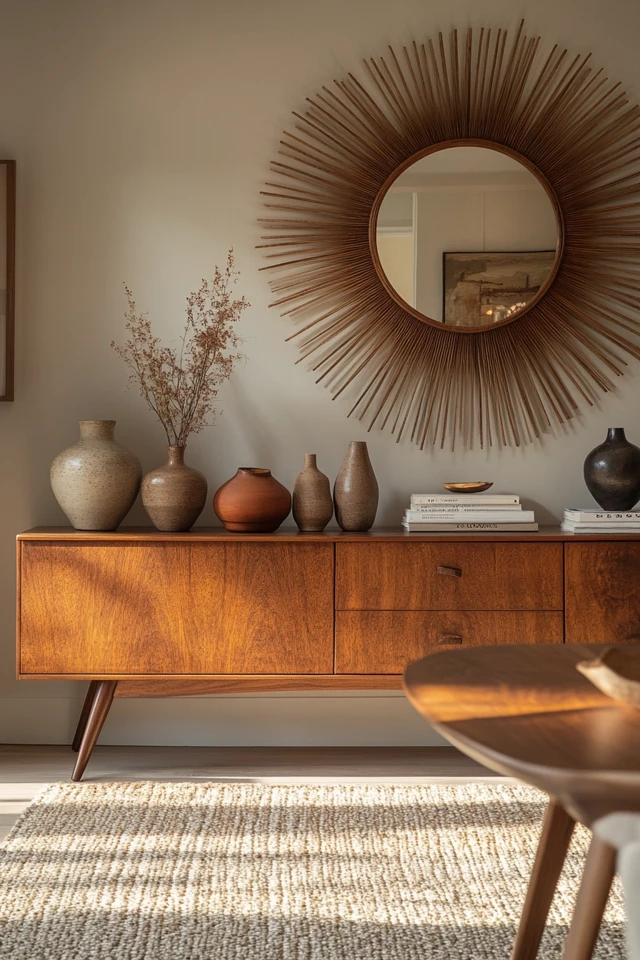
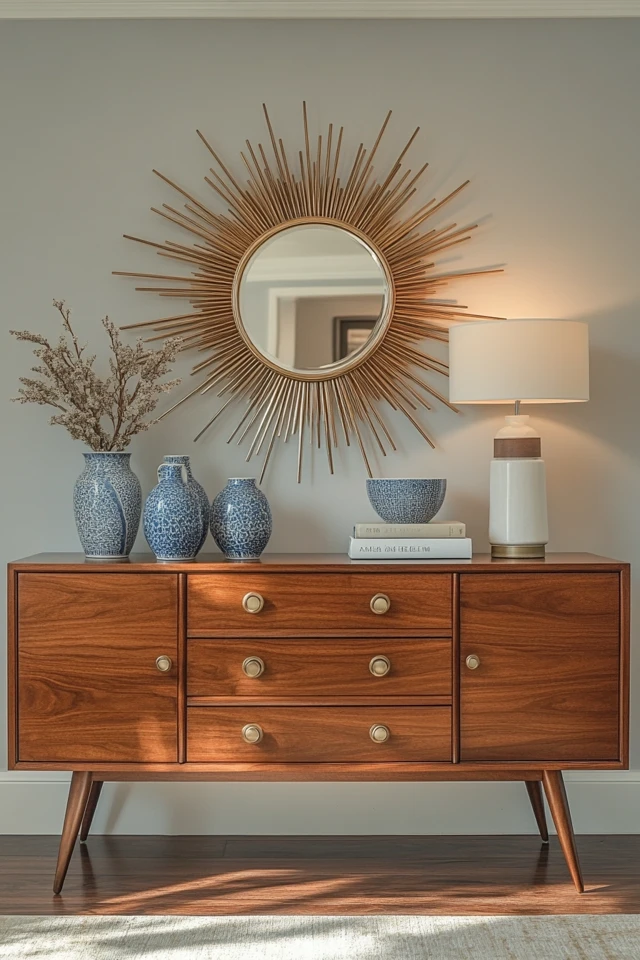
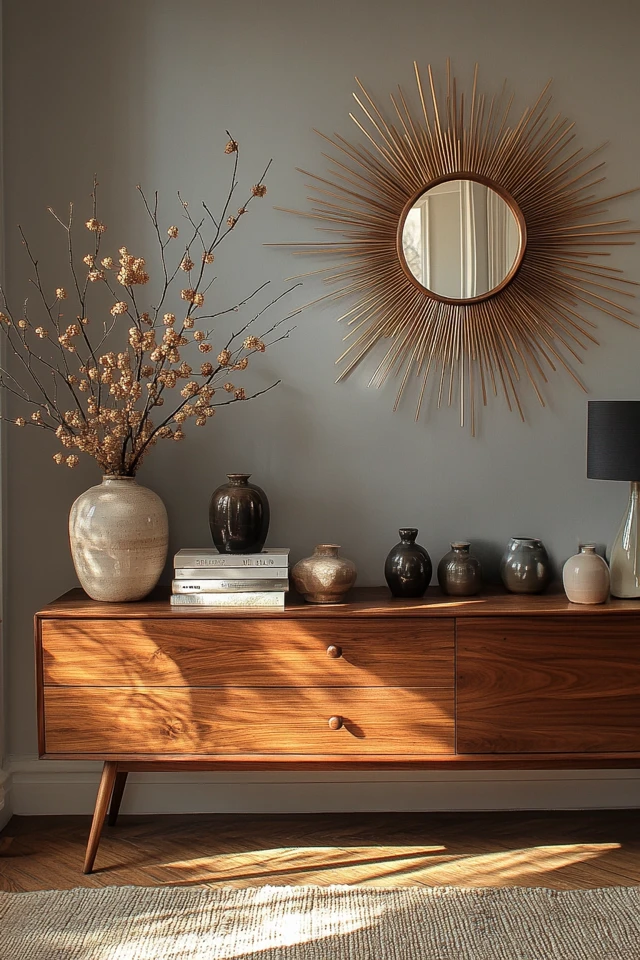
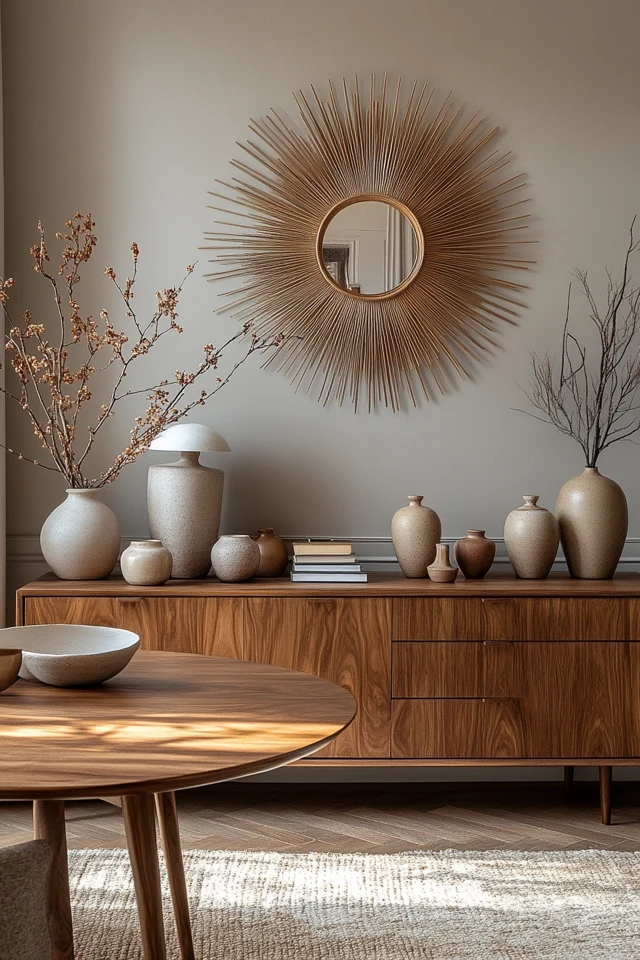
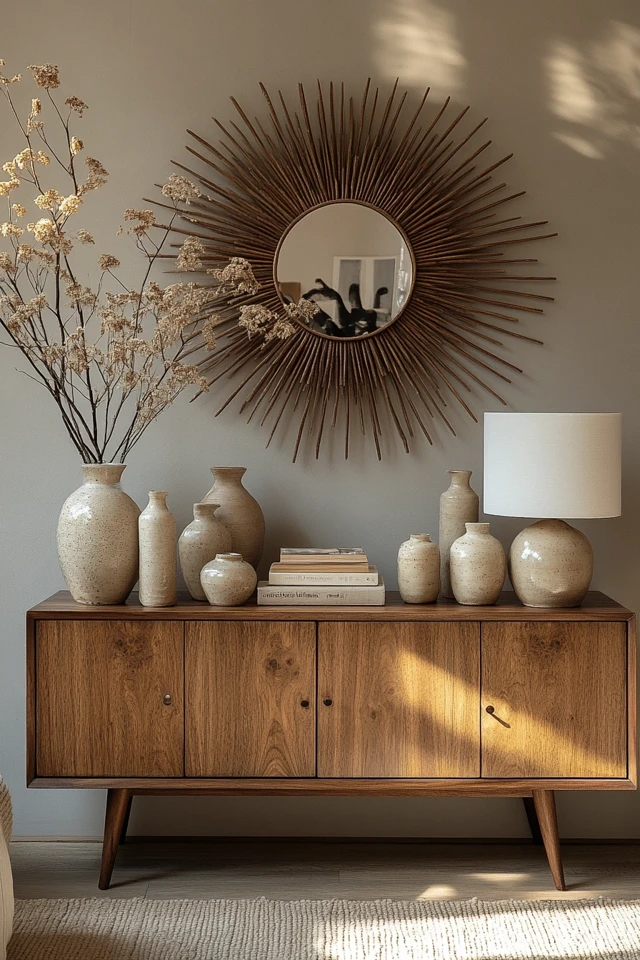
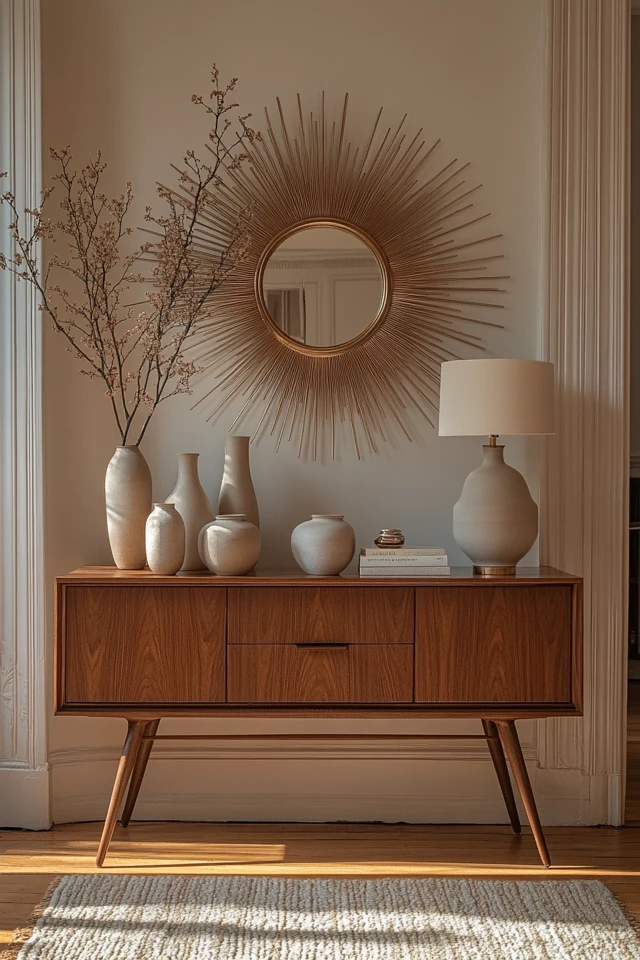
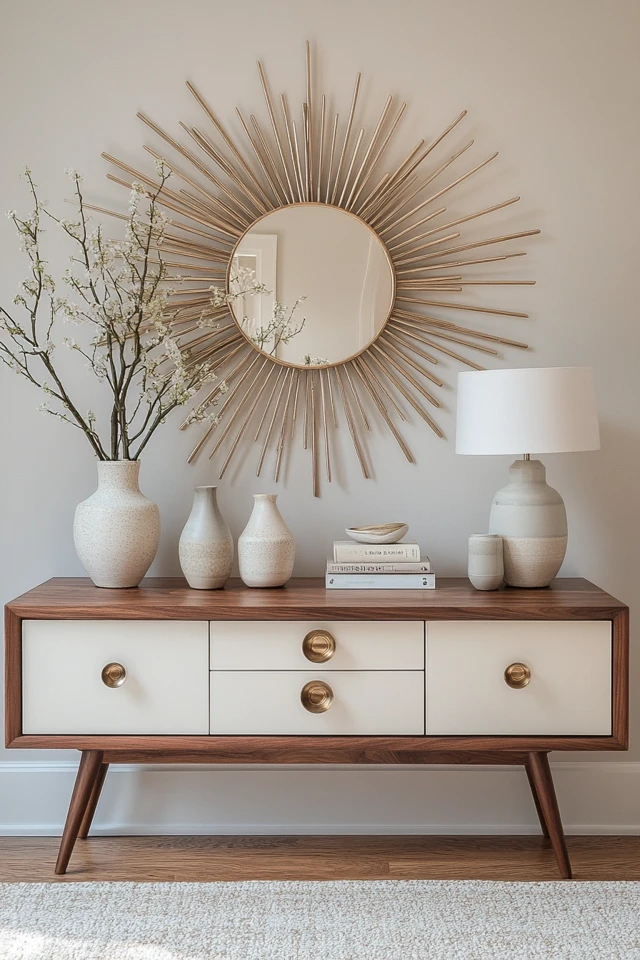
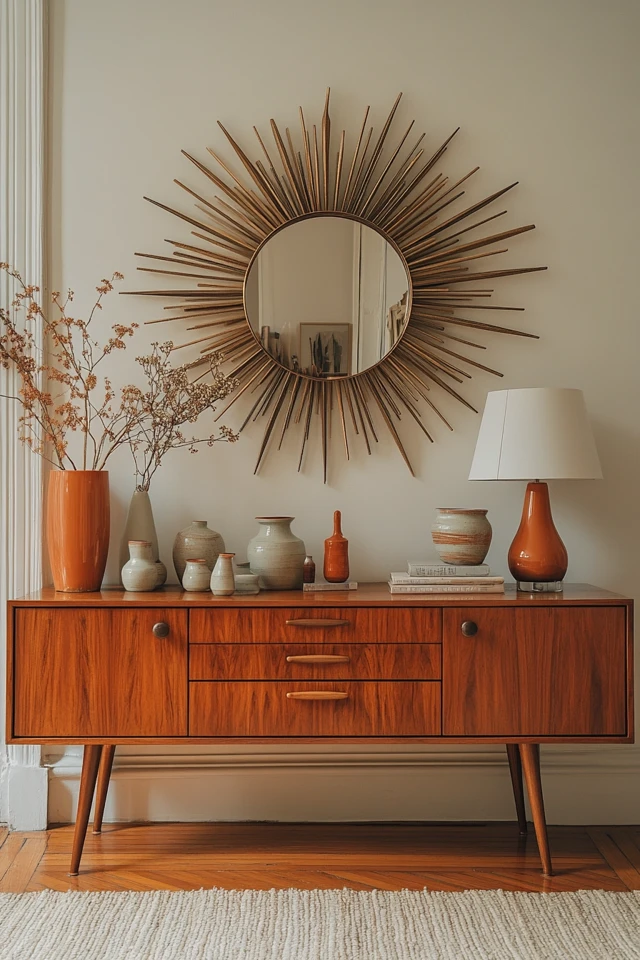
5. The Low-Profile Sideboard
A low-profile sideboard creates a streamlined look and is perfect for rooms with lower ceilings or minimalist decor.
Features
- Horizontal, elongated design with a low height.
- Clean lines and minimal detailing.
- Great for placing under windows or wall-mounted TVs.
Example:
The IKEA Stockholm Sideboard offers a sleek, low-profile design in warm wood tones.
6. The Multi-Purpose Sideboard
Sideboards that double as bar cabinets or media consoles add versatility to your space.
Features
- Built-in features like wine racks, cable management, or adjustable shelves.
- Ideal for entertaining or organizing electronics.
- Works in dining rooms, living rooms, or even bedrooms.
Example:
The Target Project 62 Naya Sideboard includes compartments for bottles and glassware, perfect for a home bar setup.
7. The Vintage-Inspired Sideboard
A vintage-style sideboard captures the charm and authenticity of mid-century modern design.
Features
- Authentic or reproduction designs with retro details.
- Sliding or tambour doors for a nostalgic touch.
- Works beautifully in eclectic or classic mid-century spaces.
Example:
The Revival Vintage Credenza offers a beautifully restored mid-century design for a truly retro feel.
8. The Modern Minimalist Sideboard
For a contemporary take on mid-century design, opt for a minimalist sideboard with subtle retro details.
Features
- Sleek, handleless doors or integrated hardware.
- Neutral or monochromatic finishes paired with wood tones.
- Perfect for modern, minimalist interiors.
Example:
The AllModern Emory Sideboard features a clean, understated design that pairs well with modern decor.
How to Style a Mid-Century Modern Sideboard
Once you’ve chosen your sideboard, styling it is the next step to creating a polished look.
Top Styling Tips
- Layer Decorative Objects: Use a mix of vases, books, and small sculptures for depth.
- Add Artwork or Mirrors: Hang a large abstract painting or a round mirror above the sideboard for a finished look.
- Incorporate Greenery: Use potted plants or fresh flowers to add life and texture.
- Use Lighting: Place a table lamp or sconce on or near the sideboard to highlight the space.
Example:
Pair a walnut sideboard with a brass lamp, a ceramic vase, and a framed abstract print for a classic mid-century vignette.
How to Choose the Right Sideboard for Your Space
1. Consider Your Room Size
- For large rooms, choose a long or wide sideboard to fill the space.
- For smaller spaces, opt for compact or narrow designs.
2. Think About Storage Needs
- If you need storage for dinnerware, choose a sideboard with deep drawers or cabinets.
- For display purposes, opt for designs with open shelving or glass doors.
3. Match Your Existing Decor
- Stick to wood tones like walnut or teak for a cohesive mid-century look.
- Use contrasting finishes, like white and wood, to add a modern touch.
Conclusion
A mid-century modern sideboard is a timeless addition to any home, offering both style and functionality. Whether you’re looking for a compact piece for your entryway or a bold statement for your dining room, there’s a sideboard to suit your needs and enhance your decor.
For me, investing in a mid-century sideboard was a design decision I’ll never regret. It became the centerpiece of my dining room, blending seamlessly with my other furniture while providing much-needed storage. It’s proof that the right piece can transform your space, combining beauty and practicality in one stylish package.
So, whether you’re drawn to classic walnut designs or bold, contemporary styles, a mid-century modern sideboard is sure to elevate your home.
FAQ
What is the difference between a sideboard and a credenza?
A sideboard typically refers to a dining room storage piece with shorter legs, while a credenza is often longer and used in living rooms or offices. However, the terms are often interchangeable in mid-century design.
What wood is best for a mid-century modern sideboard?
Walnut, teak, and rosewood are classic choices for their rich tones and durability. Oak is also a good option for lighter, more contemporary looks.
Can a sideboard be used as a TV stand?
Yes! Many mid-century sideboards double as media consoles, providing storage for electronics and cable management.
How do I care for a mid-century modern sideboard?
Dust regularly with a soft cloth and use a wood polish to maintain the finish. Avoid placing hot or wet items directly on the surface.
Where can I find mid-century modern sideboards?
Retailers like West Elm, Article, and Joybird offer modern reproductions, while vintage options can be found on platforms like Chairish, 1stDibs, or local thrift stores.

